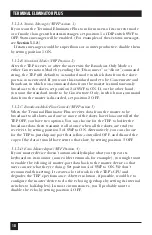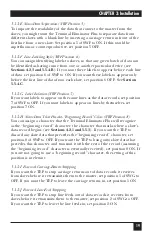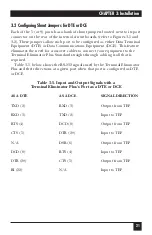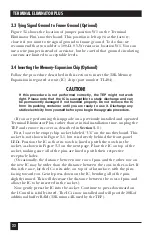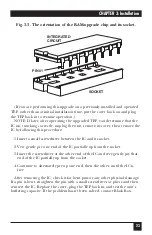
8
TERMINAL ELIMINATOR PLUS
The Terminal Eliminator Plus (TEP) is named for one of its primary uses—
to eliminate the need for more than one operator console in a computerized
information-gathering system. The TEP allows one asynchronous terminal to
serve as the operator’s console (the “master”) for up to four (eight with the
optional 4-Port Expansion Board) serial async input devices (“slaves”) such
as CPUs, data loggers, data concentrators, data PABXs, network management
systems, and intelligent test-data sets/analyzers. For applications requiring more
than eight slave ports, multiple TEPs can be connected together in a method
called “cascading”: cable is run from the slave port of one unit to the master
port of another. You can cascade three “layers” of TEPs from a main TEP for
a maximum of 4096 possible slave ports.
The Terminal Eliminator Plus is especially suited for applications where
most of the operator’s console use is devoted to receiving output-log messages
and status reports with an occasional need for interactive responses from the
keyboard. Two primary types of applications are typical:
(A) Using the TEP to concentrate the console output of many mainframe
computers in a large computer center to one operator’s console. The
operator will then receive all messages (to mount magtapes, etc.) at one
convenient location.
(B) Using the TEP to poll or concentrate the output from other devices
such as bar-code readers, scales, security systems, etc., to a master PC. This PC
will be running a program created or purchased by the customer to extract
and interpret the data from the TEP and act on it according to the customer’s
needs: create files from the data, print scale weights to an attached printer,
etc.
The standard Terminal Eliminator Plus supports four input devices and one
output device. It has 32K of RAM, of which approximately 31K is devoted to
buffering. You can expand your TEP’s input-port capacity and/or RAM with
the following items:
• The 4-Port Expansion Board (our product code TL483-C) provides four
additional input ports. (This manual reports numbers for the standard
five-port TEP in the main text, but follows these with numbers for the
expanded nine-port TEP in parentheses.)
• The RAM Upgrade (our product code TL484) provides 32K of additional
RAM, of which 28K is devoted to buffering.
2. Introduction

















